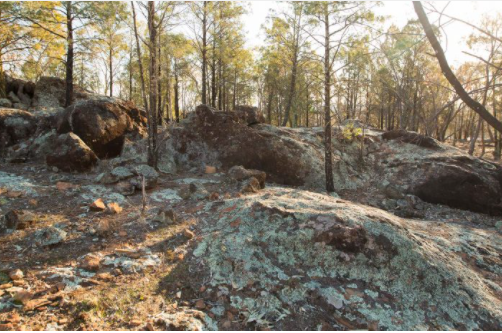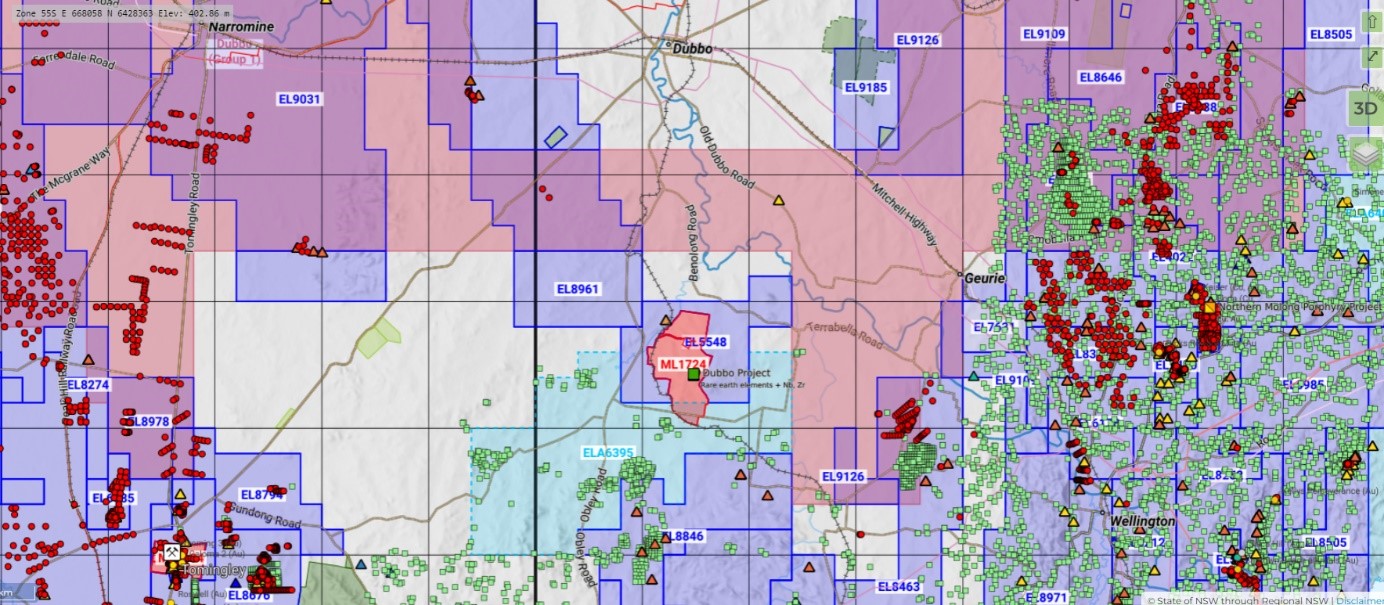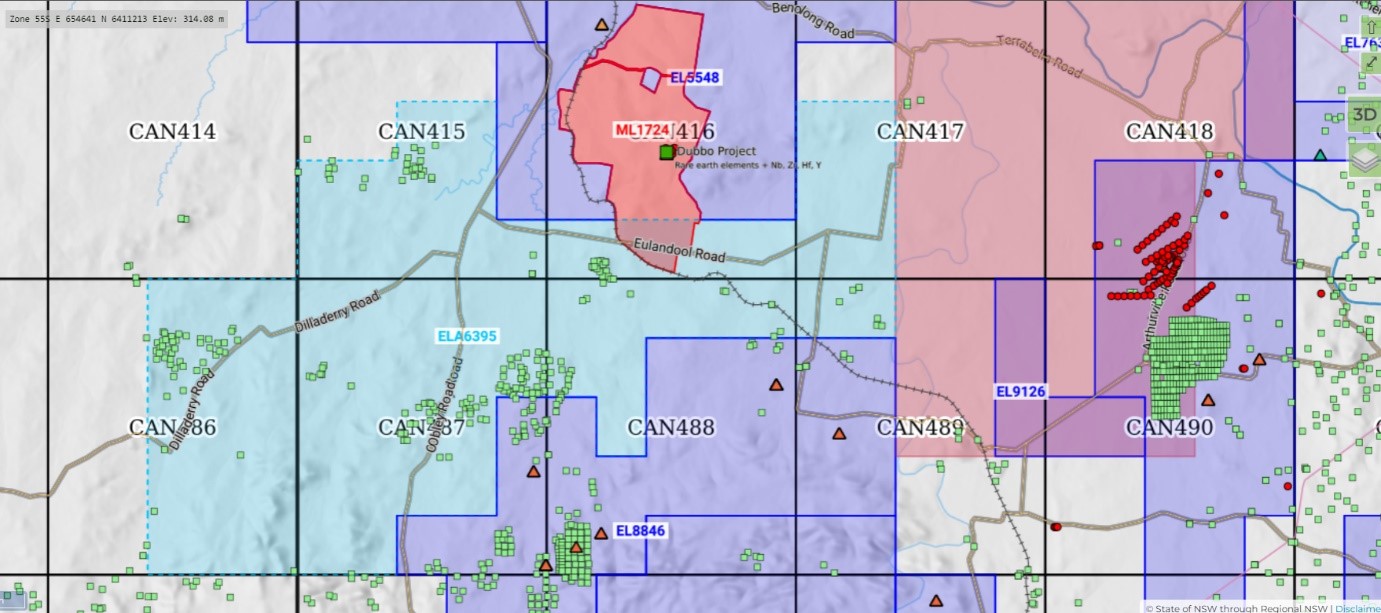


ELA6395 – Toongi Rare Earth Project

ELA6395 - Toongi Rare Earth Project
Toongi Rare Earth Project
The significant project area comprises one exploration license application, ELA6395, that is located 40kms south of Dubbo and 400 kms north west of Sydney in the east Lachlan Fold region. This project is bounded by latitudes 32.450o – 32.583o south and by longitude 148.450o-148.701o east. Dubbo is a key regional centre in Central New South Wales, Australia. Its annual output is AUD7.2 billion, with a population of over 50,000. With interstate highway links, plus daily air and rail services, the Dubbo Region is also well positioned as a growing mining services centre.
The license application was made by Resources City Pty Limited, a 100% owned subsidiary of Minerals City Pty Limited. The exploration license application has a term of three (3) years from Q1 2022.
The ELA sits within seven blocks and is comprised of 67 units, with a total area of approximately 201 sq kms, or 20,100 hectares. The primary tenure for each licence is a combination of Crown Land and freehold title. The freehold is held by local farmers and agricultural investors. Under the new Crown Land Management Plan, and as a holder of over 40% of the land in New South Wales, Crown Land is very accessible and keen to see mining development within the NSW state.
Application for the license was made on 30 November 2021 and should be granted late Q1 2022 for an initial term of three years. A security deposit (AUD10,000) and annual Rent & Levy will be paid following the issue of a Notice of Proposed Decision.
The license application surrounds a southern section of mining license ML1724 (the Dubbo Project which covers an area of 802 ha.) held by Australian Strategic Materials (Holdings) Limited (ASX:ASM). ASM is the largest rare earth developer in NSW, and is the second largest rare earth company in Australia.
Our Neighbour – The Dubbo Project
The Dubbo Project represents a large in-ground polymetallic resource, made up of rare earths, zirconium, niobium, hafnium, tantalum and yttrium. It is wholly owned by ASM. At full capacity, the Dubbo Project’s mineral processing plant will be capable of processing 1 million tonnes per annum of crushed ore via sulphuric acid leach and solvent extraction recovery. Mining will take place in a single open pit, after which ore will be transported to the processing facility.
The Dubbo Project is based on the Toongi deposit, a massive fine-grained trachyte outcrop of Jurassic age with elevated levels of rare earths, zirconium, niobium and hafnium. The reportable Dubbo Project Mineral Resources are based on the open pittable Toongi deposit, which has a depth extent of 115 metres below surface. These Mineral Resources are wholly inclusive of Ore Reserves, which are based on economic parameters applied to the Mineral Resources, reflecting an initial project horizon of 20 years. Ore Reserves and Mineral Resources for the Dubbo Project are reported in accordance with the 2012 edition of the Australasian Code for Reporting of Exploration Results, Mineral Resources and Ore Reserves (JORC 2012). These estimates, provided by independent industry consultants Mining One Pty Ltd, take into account revised engineering, costings and revenue data, and were reported to the ASX on 19 September 2017 . The proximity of the Toongi deposit to Dubbo, a major regional centre with infrastructure and services, was also considered an advantage.
The Toongi deposit comprises largely homogeneous trachyte lava flow formed approximately 190 million years ago. The ore mineralogy is unusual, comprising three minerals uncommon in themselves and not usually found together. They are dispersed in a homogeneous fine-grained interlocking alkaline volcanic rock. The key mineral is a hydrous zirconium silicate similar to eudialyte, containing all the zirconium, hafnium, yttrium and heavy rare earths. The other two minerals of interest are natroniobite, which hosts all the niobium and tantalum, and bastnaesite, which hosts all the light rare earths.
The 2018 version of the flow sheet shows the following product streams:
- Zirconium as zirconium oxychloride (ZOC), as well as a range of other materials
- Multiple streams of rare earths (with one being the key rare earth magnet materials Nd, Pr, Dy and Tb)
- Ferro-niobium
- Hafnium materials